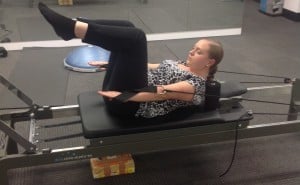Joseph Humbertus Pilates, born in 1880, was one of the first to explain imbalance theories within the body. He believed that when someone was injured, it was because there were imbalances present within the body and its normal patterns of movement. Through Pilates exercises, these imbalances could be corrected and as a result, the injured body part would improve. In addition, if the individual could maintain their improvements through these exercises then this would help prevent recurrence of the same injury.
Joseph Pilates established 8 traditional Pilates principles:
- Concentration
- Breathing
- Centering
- Control
- Precision
- Flowing Movement
- Integrated Isolation
- Routine
He believed that, by using these 8 Pilates principles, the individual would be able to correctly change their abnormal patterns of movement and achieve a long-term, positive effect into daily function.
Although the traditional Pilates principles have not been altered significantly through time, Joseph’s traditional Pilates exercises have. Traditionally these exercises were designed for fit and healthy people, particularly dancers, who would have needed very good muscle flexibility and joint mobility. These traditional exercises placed more focus on the outer muscles rather than the inner core muscles and relied on the individual having both good proprioception and body awareness (like dancers have!).
 Current Pilates methods have taken the traditional exercises and broken them down for Physiotherapists to use as a rehabilitation tool. These exercises are now based on segmental spinal stabilisation research and lumbo-pelvic stabilisation theory. The exercises are now suitable for use in orthopaedic, women’s health, sports, neurological and paediatric settings; hence being more appropriate for the wider clinical population. Current Pilates exercises still focus on altering abnormal patterns of movement which lead to specific injury. However, current methods have a wider selection of exercises that can cater to various individuals suffering from a variety of injuries, from beginners to those with advanced skills.
Current Pilates methods have taken the traditional exercises and broken them down for Physiotherapists to use as a rehabilitation tool. These exercises are now based on segmental spinal stabilisation research and lumbo-pelvic stabilisation theory. The exercises are now suitable for use in orthopaedic, women’s health, sports, neurological and paediatric settings; hence being more appropriate for the wider clinical population. Current Pilates exercises still focus on altering abnormal patterns of movement which lead to specific injury. However, current methods have a wider selection of exercises that can cater to various individuals suffering from a variety of injuries, from beginners to those with advanced skills.
It is extremely important that our bodies are working optimally in everyday life. If our bodies are, or have developed, abnormal patterns of movement then this can lead to injury. Most commonly, an individual only seeks Physiotherapy intervention when pain is involved. However, if these abnormal movements were corrected prior to the onset of pain then ideally the individual would not have to suffer through the pain to correct this dysfunctional pattern.
Book an appointment with one of our highly trained Bend + Mend Physiotherapists in Sydney’s CBD today for more information on how Pilates could help your current condition.





